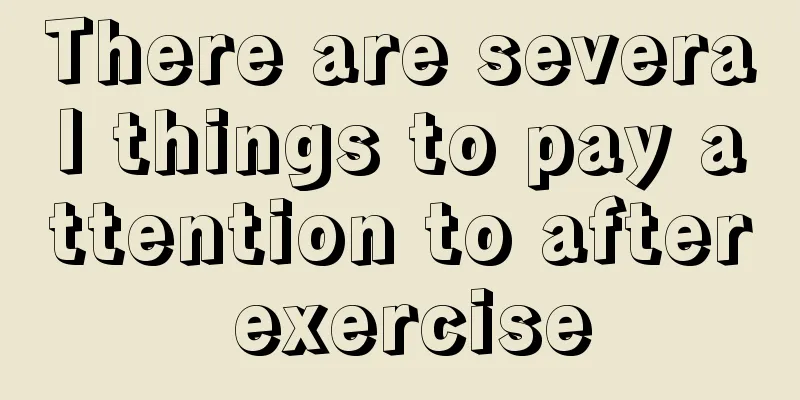Ten Dangerous Signs to Watch Out for When Working Out

|
In recent years, exercise and fitness have become a trend. Whether it is in the gym or outdoors, the benefits of fitness are unquestionable. However, you must pay special attention when exercising, because you may experience physical discomfort at any time. When facing these, you must not only pay great attention to them, but also learn how to deal with them. Let's take a look at the danger signals that are easy to appear during exercise.
1. Asthma after exercise: Most of them occur in the cold spring, which may be related to the cold air irritating the respiratory tract. The preventive measure is to keep warm and make necessary preparations before engaging in outdoor activities in spring. 2. Heart rate does not increase during exercise: A person's heartbeat speeds up when exercising. The greater the amount of exercise, the faster the heartbeat. If the heart rate does not increase significantly during exercise, it may be an early sign of heart disease, indicating the risk of angina pectoris, myocardial infarction and sudden death in the future. 3. Abdominal distension and pain during exercise: During exercise, sudden abdominal distension and pain are mostly caused by rectus abdominis spasm due to loss of water and salt through excessive sweating. When abdominal pain occurs, you should lie down and rest, do abdominal breathing 20-30 times, and gently massage the rectus abdominis for about 5 minutes to relieve the pain. When sweating too much during exercise, timely replenishing 200-300 ml of saline is the key to prevention. 4. Headache during exercise: A small number of heart disease patients do not feel any abnormality in the chest during an attack, but will experience headaches during exercise. Most people just think they didn't get enough rest or had a cold. Therefore, friends who participate in sports are reminded that if they feel a headache during exercise, they should go to the hospital for examination as soon as possible. 5. Angina during exercise: Exercise will increase the load on the myocardium and increase myocardial oxygen consumption. Especially for some middle-aged and elderly people with varying degrees of vascular sclerosis, exercise may cause relative blood supply deficiency to the heart, leading to coronary artery spasm and angina pectoris. When encountering this situation, you should stop exercising immediately. After taking nitroglycerin tablets sublingually, the angina pectoris will generally disappear. 6. Abdominal cramps during exercise: Upper abdominal colic is often caused by stomach spasms such as low water temperature during swimming, insufficient warm-up exercises, and excessive exercise. At this time, you can apply hot compress on the upper abdomen for 20-30 minutes, and press the Neiguan and Zusanli points with your hands for 3-5 minutes each. To prevent gastric cramps, you should do sufficient warm-up exercises before exercise, avoid overeating, avoid eating beans, sweet potatoes, potatoes and other foods, and eat less cold drinks. Dull pain or bloating around the navel or lower abdomen during exercise is mostly intestinal cramps. At this point, the pain can be relieved by simply stopping the exercise. You can also relieve pain by massaging the Hegu points on both sides with your hands for 5 minutes each, or applying hot water to the navel area for 10-20 minutes. To prevent intestinal cramps, you should do adequate warm-up exercises before exercise and avoid eating raw or cold foods. 7. Pain in the liver area during exercise: Swelling and pain in the liver area may occur during exercise, mostly during long-distance or middle-distance running. At this time, massaging the liver point on the right side of the back for 5 minutes can relieve the pain. Pay attention to your breathing method during exercise. Not breathing with your mouth open and breathing through your nose is the key to prevention. 8. Spleen pain during exercise: Spleen swelling and pain during exercise is mostly caused by excessive exercise, slow venous blood return, and congestion and swelling of the spleen. If you experience spleen distension and pain, you should stop exercising and massage the spleen and stomach points next to the spinous processes of the thoracic 11-12 vertebrae on the left side of the spine for 3-5 minutes. You will feel better in a moment. Doing adequate warm-up before exercise is the key to prevention. 9. Fainting during exercise: If you are overly nervous when exercising, or suddenly stand up after squatting for a long time, you are likely to experience transient hypotension, resulting in a series of symptoms such as dizziness, tinnitus, and blacking out in front of your eyes. In severe cases, you may faint on the spot. At this time, you should stop exercising immediately, and most of the symptoms will be relieved by themselves after proper rest. 10. Hematuria after exercise: It is more common in people who exercise vigorously for a long time. Data shows that about 15% of marathon runners who complete the entire marathon will experience hematuria. This is because during strenuous exercise, the blood demand of muscles, joints, etc. throughout the body increases sharply, which reduces the blood flow to the kidneys, causing the permeability of the glomerular capillary walls to increase, allowing red blood cells that originally could not pass through the blood vessel walls to enter the urine, thus forming hematuria. Exercise-induced hematuria will generally disappear gradually after about a week of rest. If you find that the hematuria is dark in color or lasts for too long, you should go to the hospital for examination in time to prevent acute nephritis. |
Recommend
What are the effects of exercise
We have to bear a lot of pressure in our lives, w...
How to exercise chest muscles
The so-called chest muscle training mainly involv...
What are the methods of practicing yoga?
Entering the 21st century, yoga has become a new h...
When is the best time to run every day?
Many people use exercise to achieve the effect of...
Can wireless skipping help you lose weight?
In daily life, what we call skipping rope may be ...
How effective is skipping rope for weight loss?
Rope skipping has always been a method of exercis...
What are the benefits of pelvic floor exercises in the gym?
There are many reasons that induce constipation. ...
What are the health exercises for middle-aged and elderly people?
As people age, their various functions will gradu...
How many jumps can help you lose weight?
Skipping rope is a very good exercise for weight ...
How to jump rope to lose weight
Many of us like to introduce some rope skipping e...
What kind of meat is good for fitness?
Long-term fitness in daily life is a very healthy...
Is fitness considered strenuous exercise?
Fitness is a way for us to achieve physical healt...
What causes rib pain when running?
Many people experience rib pain when they first s...
What are the methods of high-intensity aerobics?
People should all know that aerobic exercise can ...
How to train strip muscles?
Physical exercise can make people have a better f...









